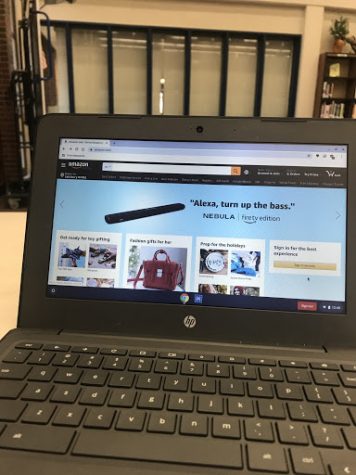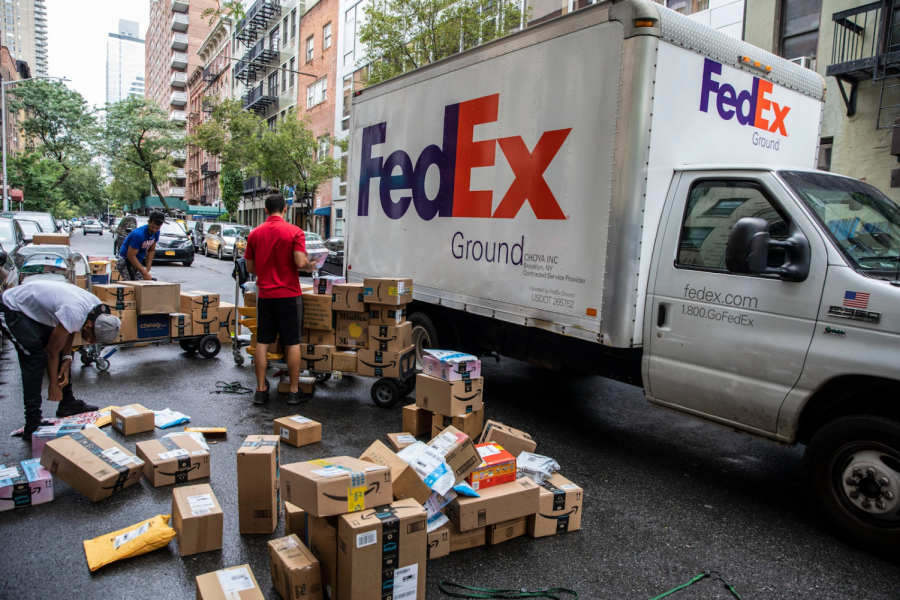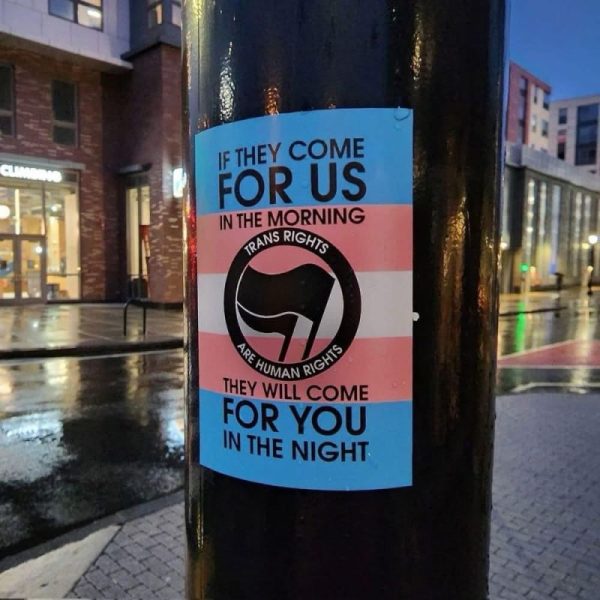The Unknown Downsides of Online Shopping
Chaos in the streets, pollution in the air, trucks delivering millions of packages daily.
Online shopping has grown rapidly over the past decade, causing urban cities to become more and more congested, and leaving a deadly toll on the environment.
Triton Junior Riley Mclaughlin, along with other consumers had no idea online shopping had negative side effects.
“I probably started online shopping around 13 or 14, but no one ever warned me about the impact it can have on the environment,” said Mclaughlin.
Although American consumers purchase many goods online for convenience, it has a more devastating impact than known. As December rolls around we will be buying gifts for our loved ones, not stopping to think about the impact our online purchases could have. During events such as Black Friday, and Cyber Monday there is a frenzy of online shopping, deliveries and returns that increase carbon emissions drastically.
Packaging millions of items daily and shipping them across the country has been found to have a negative impact on the environment. In addition, if items bought online are returned, twice the amount of energy is consumed and even more carbon dioxide is released into the environment. The rise in online shopping has also caused urban areas such as New York, and other large cities to become more congested.
A common misconception among online shoppers is that purchasing items online is better for the environment, than traveling to a store.
“I’ve been online shopping ever since I got a computer,” said triton junior, Nora Marks. “I don’t like shopping online more than shopping at the mall, it’s just so much easier to buy clothes from the comfort of my room”.
According to “How Your Amazon Delivery Helps to Clog the Streets” by Azi Pabarah of NY times, after packaging an item and shipping it to someone’s house it has left a much greater carbon footprint rather than driving to a store. In addition, one must take into account some packages are shipped from across the country or even outside of it. Delivery trucks have proven to be the largest contributor of greenhouse gas emissions in all of New York.
According to “1.5 Million Packages a Day” by Matthew Haag and Winnie Hu of NY times, “From 1990 to 2017, carbon dioxide emissions from automobiles and trucks in the New York City area grew by 27 percent.” Delivery trucks from shipping services, especially, Amazon Prime have contributed greatly to these carbon emissions along with recreational cars. According to The National Magazine of the Sierra Club, in order to avoid environmental consequences it is recommended by online advocates to avoid purchasing items impulsively and do not choose one or two day shipping. It is also suggested to ask for eco-friendly packaging, if available.
These rapid shipping services have not only contributed to carbon emissions but caused economically prosperous cities such as New York to become even more congested. It has created a need for thousands of more trucks and is clogging up the streets. There has also been a major increase in traffic on interstate 95, according to The American Transportation Research Institute. There is not enough parking for truck drivers so streets become dangerously packed, very quickly.
“Deliveries are now expected to go into neighborhoods that were never designed for freight traffic — creating congestion, noise problems, and infrastructure damage in addition to emissions,” stated vox.com.
Warehouses are also being built closer and closer to residential areas. Many of these warehouses are used to deliver packages faster than ever and act as a checkpoint for delivery trucks. Recently amazon added two warehouses in a neighborhood in Brooklyn, called Red Hook. There has been a rise in complaints from neighborhoods with families, who are beginning to be affected by this new online economy.
According to UPS, packages are scanned and sorted by size and weight. Once the packages are organized they are sent to another sorting facility to be scanned and determine their destination. Depending on their destination they either travel by plane or truck. If less than 200 miles away the package is delivered by a truck. However, if it is more than 200 miles away it is shipped by plane. Consumers are not used to checking where their package is shipped from, so they do not realize it may have to take a plane, along with many other packages, greatly adding to carbon emissions.
Currently e-commerce has only been around for about 30 years and no one knows the lasting effects it could have on society.
“It’s scary to think about what could happen to the environment if online shopping continues to grow so quickly,” said Triton junior, Kyla Prussman.


Hi! My name is Julia Casaletto. I am currently a junior at Triton High School. I am sixteen years old and live in Rowley, MA.
Outside of school I...










